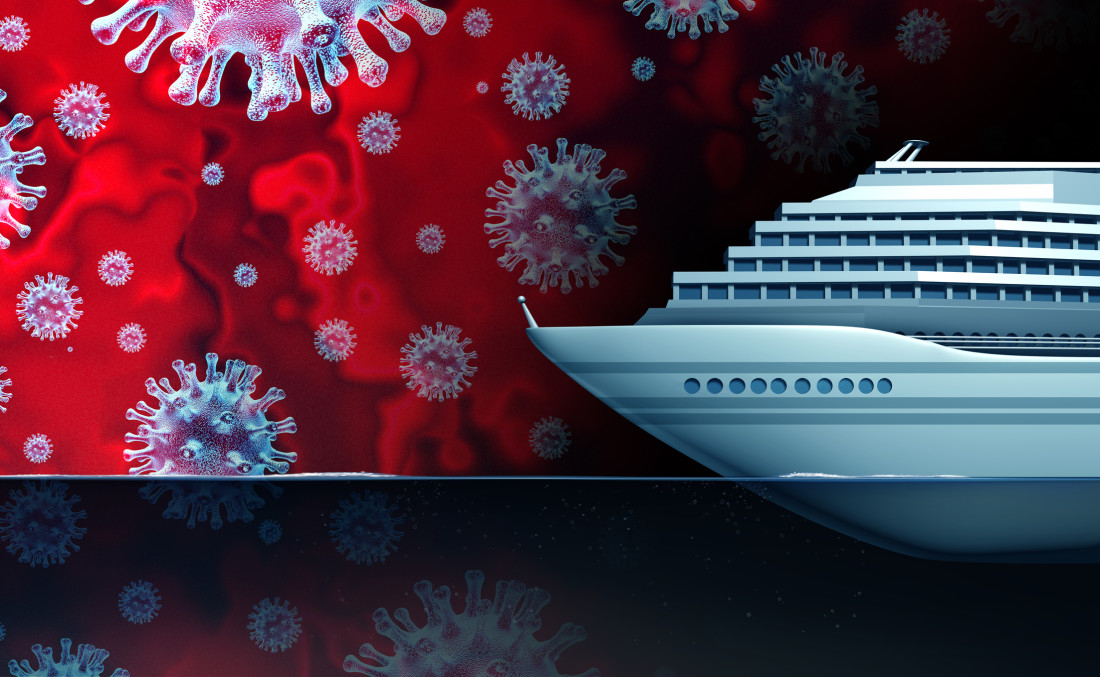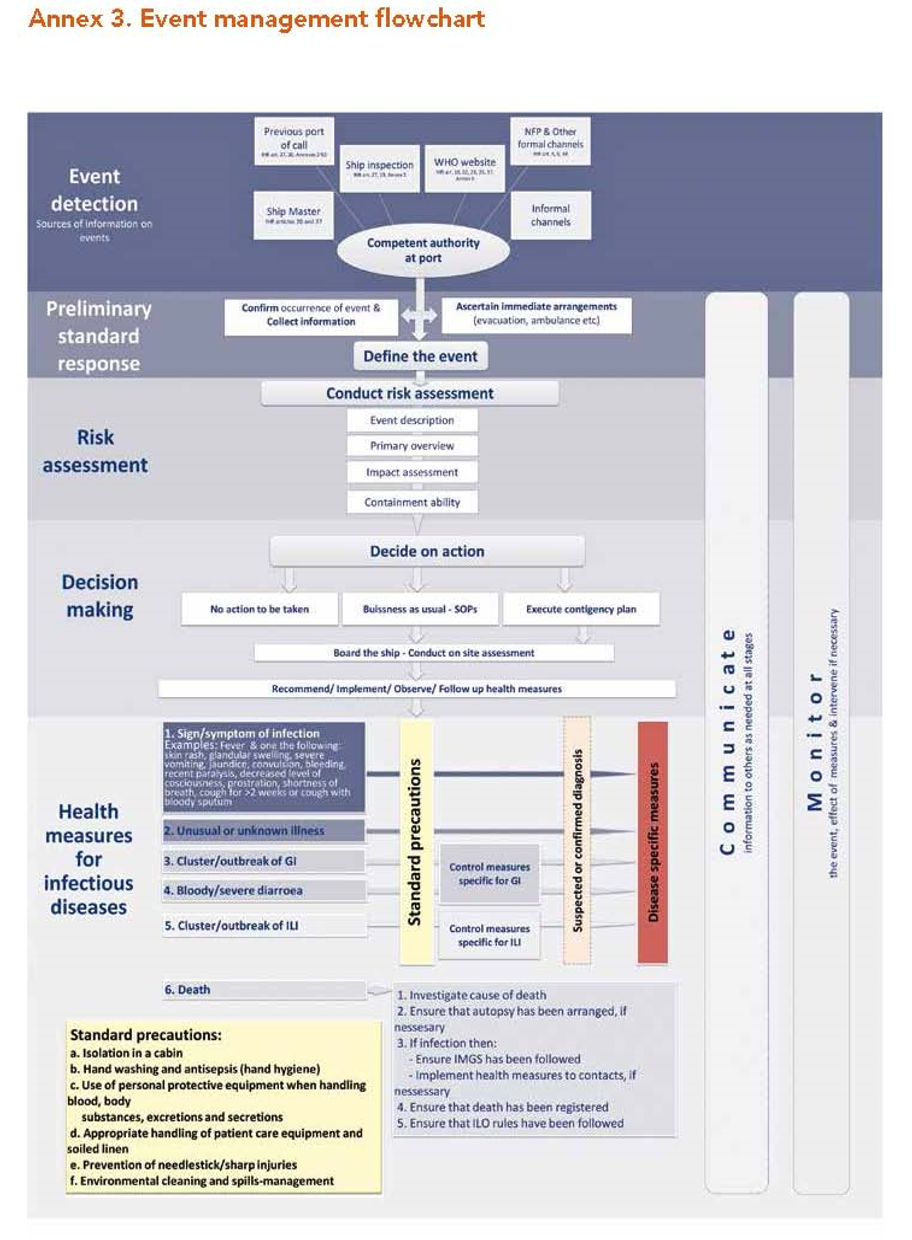
Cruise ships are floating cities, providing their passengers with each and every luxury they are accustomed to onshore. However, they are also enclosed environments in which thousands of people are in close contact with one another, crew and passengers alike. The areas of public access on a ship are vast, and the hard and soft surfaces on which a virus may live are innumerable. As such, viruses, like COVID-19, a new type of Coronavirus, which currently has no known immunization, are extremely concerning. Research to date suggests that COVID-19 is spread mainly through person-to-person contact, through respiratory droplets, produced when an infected person coughs or sneezes. However, it may be possible that a person can contract COVID-19 by touching a surface or object that has the virus on it and then touching their own mouth, eyes, ears, nose, etc.
Cruise lines are able, however, to protect themselves from claims brought by both passengers and crew alike for the allegation that one contracted the COVID-19 virus due to the cruise lines’ lack of “reasonable and proper care.” Several guidelines for the detection, containment and management of COVID-19 have been published by the International Maritime Organization (“IMO”), the Centers for Disease Control (“CDC”), the World Health Organization (“WHO”) and the Cruise Lines International Association (“CLIA”). Adherence to these guidelines, along with those required internally by the cruise lines themselves, may provide cruise lines with a defense against claims for COVID-19-related negligence.
In a maritime case, the duty owed by a vessel owner is to exercise reasonable care under the circumstances, “which requires, as a prerequisite to imposing liability, that the carrier have actual or constructive notice of the risk-creating condition.” Keefe v. Bahama Cruise Line, Inc., 867 F.2d 1318, 1322 (11th Cir. 1989); Ceithaml v. Celebrity Cruises, Inc., 2016 WL 5478425, at *4 (S.D. Fla. Sept. 14, 2016) (“In this District, courts regularly dismiss negligence claims pursuant to Keefe’s requirement that a defendant cruise line must have had actual or constructive notice of the danger claimed by a plaintiff.”) “A cruise line must warn passengers of those dangers that ‘the cruise line knows or reasonably should have known,’ and ‘which are not apparent and obvious to the passenger.’” Gayou v. Celebrity Cruises, Inc., 2012 WL 2049431, at *5 (S.D. Fla. June 5, 2012) (quoting Smolnikar v. Royal Caribbean Cruises, Ltd., 787 F. Supp. 2d 1308 at 1315 (S.D. Fla. 2011).
I. Centers for Disease Control and Prevention Guidelines
On February 18, 2020, the CDC made revisions to its previous publication entitled “Interim Guidance for Ships on Managing Suspected Coronavirus Disease 2019.” The following guide points are the latest in the updates provided by the CDC, however, as this is a dynamic situation, guidelines and other requirements will continually be updated by the CDC.
The CDC provides guidelines for ships originating from, or stopping in, the United States, to help prevent, detect and medically manage suspected COVID-19 infections. The guidelines are provided to assist in reducing the spread of the virus and include personal protective measures for crew members, during and after a voyage. The CDC recommends that ships encourage both crew members and passengers to:
- Postpone travel when sick;
- Watch their health;
- Self-isolate and inform the onboard medical center immediately if they develop a fever of 100.4 degrees Fahrenheit or higher, begin to feel feverish, or develop other signs or symptoms of sickness;
- Use respiratory, cough, and hand hygiene (advise passengers and crew of the importance of covering coughs and sneezes with a tissue and disposing of that tissue immediately in the proper manner); and
- Wash their hands often with soap and water, especially after coughing or sneezing (or to utilize hand sanitizer containing 60%-95% alcohol if soap and water are unavailable).
Further, the CDC recommends that a cruise ship deny boarding to a crew member or passenger who is suspected to be infected with the COVID-19 virus.[1]
However, if a passenger or crew member does not display signs or symptoms until after embarkation, then the CDC suggests that the cruise line isolate the individual(s) in a single-occupancy cabin with the door closed until the symptoms are improved. The discontinuation of isolation precautions are to be made on a case-by-case basis and only upon consultation with the CDC. Those passengers and crew members who are considered to have had “high-risk” exposures to a person suspected of having COVID-19 should be quarantined in their cabins and all potentially exposed individuals (including passengers, crew and medical staff) should self-monitor under the supervision of the ship’s medical staff or via a telemedicine provider until fourteen days after the last possible exposure.
In order to further mitigate the spread of the virus, the CDC recommends that crew members who self-report or appear to have a fever or acute respiratory symptoms be immediately evaluated. Additionally, the CDC urges that cruise lines should ensure that its crew members are aware of:
- The global risk of COVID-19 during international travel;
- The signs and symptoms that may indicate an individual has contracted the COVID-19 virus;
- The requirements for the ship’s medical unit to report a traveler with suspected or known COVID-19 to the CDC, if the ship is destined for a U.S. port; and
- The importance of not working on a ship while sick with a fever or acute respiratory symptoms.
A cruise ship destined for a U.S. port of entry is required to immediately report any death that occurs onboard, or any illness of a crew member or passenger that meets the CDC’s definition of an “ill person,”[2] including suspected cases of COVID-19, to the CDC Quarantine Station with jurisdiction for that particular port. Prior to disembarkation, the cruise ship’s medical staff and telemedicine provider or a cruise line representative, must discuss the disembarkation of patients suspected of having COVID-19 with the CDC Quarantine Station with jurisdiction, along with the state and local health departments.
For those cruise ships on international voyages where a death or “ill person” exists onboard, the cruise line must complete the Maritime Declaration of Health and send the form to the competent authority, according to the 2005 International Health Regulations (“IHR”) and the legislation of the country where the ship intends to land.
With respect to the cleaning and disinfection of ships, the CDC recommends that, in addition to routine cleaning and disinfections, ships should consider more frequent cleaning of commonly touched surfaces. Further, the CDC guidelines provide that the standard practice for controlling pathogens spread by air is to restrict unprotected people from entering a vacated room until a sufficient amount of time has passed for enough air changes to remove infected air particles. However, because we do not yet know how long COVID-19 remains in the air, the CDC recommends applying a time period of restriction similar to that used for other pathogens spread by air (e.g. measles, tuberculosis)—two hours after the infected person has vacated the room.
When cleaning an area where COVID-19 is suspected, the CDC suggests using cleaning agents that have been approved for use by the Environmental Protection Agency against emerging viral pathogens. The CDC recommends wearing disposable gloves and gowns while cleaning and to carefully remove and dispose of those products after cleaning so as to avoid any cross-contamination.
II. Cruise Lines International Association (CLIA) Statement on COVID-19
On March 8, 2020, CLIA published its Statement on COVID-19. Every major cruise line is a member of CLIA and has been made aware of this publication. In response to the COVID-19 outbreak, CLIA has adopted “enhanced screening measures” which require all CLIA members to:
- Deny boarding to all persons that have travelled from, visited, or transited via airports in South Korea, Iran, China, including Hong Kong and Macau, and any municipality in Italy subject to lockdown measures by the Italian government (virtually all of Italy at this time of this writing), within 14 days prior to embarkation;
- Conduct illness screening for all persons who have travelled from, visited, or transited via airports in any destination listed on the U.S. CDC Coronavirus 2019 Information for Travel page within 14 days before embarkation. Illness screening includes symptom history checks for fever, cough and difficulty breathing in the 14 days before embarkation;
- Conduct temperature screening, as soon as capable, at initial embarkation for all persons boarding. Any individual with a temperature at or above 100.4 degrees Fahrenheit is to receive a secondary screening to include a more comprehensive medical assessment;
- Deny boarding to all passengers who, within 14 days prior to embarkation, have had contact with, or helped care for, anyone suspected or diagnosed as having COVID-19, or who are currently subject to health monitoring for possible exposure to COVID-19; and
- Conduct pre-boarding screening necessary to effectuate these prevention measures. Enhanced screening and initial medical support are to be provided, as needed, to any persons exhibiting symptoms of suspected COVID-19.
The World Health Organization’s Handbook, though originally published in 2005, has been continuously updated to reflect new and changing methods of guidance in response to the various viruses and global health concerns that have been recognized over the past fifteen years. As such, the Handbook was last updated in 2016, and does not expressly address COVID-19, which has now emerged. Notwithstanding, the WHO recommends that all cruise ships maintain a copy of the most updated version of the Handbook onboard at all times so that the ship’s crew is aware of the WHO’s recommended health measures to combat infectious diseases. According to the IHR, competent authorities at ports are responsible for responding to events that pose a risk to public health. These events are identified through notifications by ships or other competent authorities, during a ship inspection or even through media reports. This, in and of itself however, does not absolve cruise ships or cruise lines from liability. Pursuant to the Handbook, ship operators or officers of a ship are responsible for:
- Permanently keeping the ships for which they are responsible free from sources of infection of contamination, including vectors and reservoirs (the application of measures to control sources of infection of contamination may be required if evidence is found);
- Facilitating inspections, medical examinations of persons on board and application of other health measures;
- Providing relevant public health information requested by the authorities at the port of call;
- Complying with and informing travelers of the health measures recommended by the WHO and adopted by the country at the port of call; and
- Making known to the port of destination, prior to arrival, any cases of illness indicative of a disease of an infectious nature or evidence of a public health risk on board.
The WHO’s Handbook provides a flowchart of actions that should be followed after the detection of an infectious disease during a ship’s voyage. A copy of the flowchart is attached hereto as Appendix A.
Pursuant to the WHO’s recommendations provided for in the Handbook, any individual exhibiting signs or symptoms of an infectious disease, should immediately be placed in isolation in a cabin and the following procedures should be applied by any person dealing with the affected individual or entering the cabin where the individual has been isolated:
- Use of proper hand washing techniques and antisepsis solutions (20-30 seconds of hand washing with soap and water);
- Use of appropriate personal protective equipment (gloves, impermeable gowns, eye protection);
- Limitations on the movement and transport of the affected person from the cabin or isolation room for essential purposes only (the affected person should wear a mask during transport); and
- Disposal of soiled personal protective equipment should mitigate any cross-contamination effects.
In order to minimize the risk to an individual who is caring for or been in contact with an infected individual, the Handbook recommends that the cruise ship’s master, doctor or crew member appointed for health issues on board is fully informed and educated about health measures for infectious diseases, the risks and hazards associated with infectious diseases, as well as the precautions and protective measures necessary to mitigate its spread. The WHO’s Handbook additionally recommends that the cruise ship maintain a log book of all persons entering the patient's isolation cabin or room, and identify those persons as “contacts” unless a diagnostic test for COVID-19 is reported as negative.
IV. International Maritime Organization COVID-19 Guidance For Ship Operators for the Protection of the Health of Seafarers
The guidelines set forth by the IMO were produced by the International Chamber of Shipping to support all types of ships operating in international waters, including cruise ships. In addition to the common precautions provided by the WHO and CLIA (e.g. hand washing, coughing into tissue, self-isolating), the IMO recommends that all ships should develop a written outbreak management plan so that all crew and passengers have knowledge of the plan. The IMO additionally recommends using the WHO’s Handbook in conjunction with its recommendations. In that respect, the IMO further suggests that until the end of the COVID-19 outbreak, all ships provide its passengers and crew with general information on COVID-19 and implement pre-boarding screening.
The IMO recommendations also provide that any person on board that may have been in close contact with a person suspected of COVID-19 infection, should be asked to remain on board until all laboratory results of the suspected case are available, and that such individuals should be categorized as either contacts with a high-risk exposure or contacts with a low-risk exposure. Further, the IMO recommends that any individual categorized as a “close contact”[3] to an individual with the COVID-19 virus should be asked to complete a Pre-Boarding Passenger Locating Form and remain on board the ship in his or her cabin (or at a specially designated facility onshore) until such time as laboratory tests for the suspected case are available. Further, low-risk contacts should be requested to complete Pre-Boarding Passenger Locating Forms with their contact details and the location(s) where they will be staying for the following 14 days. Cruise lines should provide low-risk contacts with information on COVID-19 signs and symptoms and request that those individuals self-monitor for such symptoms. Cruise lines should also instruct low risk contacts to self-isolate immediately upon the onset of COVID-19 symptoms for a period of 14 days.
In the event a ship’s medical officer suspects an individual has contracted COVID-19, the IMO recommends that the medical officer immediately isolate the individual(s) and utilize proper hand-washing techniques and follow the aforementioned “close contact” protocol. Additionally, the IMO recommends that shipboard medical officers keep a logbook of anyone on board who has visited the medical facility as a suspected COVID-19 case and document the isolation and hygiene measures taken along with any close or casual contacts onboard or onshore. In the event an individual is categorized as a suspected/confirmed COVID-19 case, the IMO provides that the individual be isolated immediately and that the next port of call must be informed of all suspected cases. All individuals entering the isolation room, chamber or quarters should take precautionary measures including the wearing of gloves, impermeable gowns, goggles and medical masks.
In disembarking an individual suspected of having COVID-19, the IMO suggests that the ship control disembarkation to avoid any contact with other persons onboard, ensure that the affected individual wear a surgical mask, and provide suitable personal protective equipment to those individuals transporting the affected individual. The IMO provides that the ship may proceed to its next port of call once the health authority at that location has determined that the following public health measures have been satisfactorily completed:
- Management of the suspect case(s) and close contacts;
- Completion of contract tracing forms and disembarkation of close contacts until the COVID-19 outbreak has been declared terminated;
- Cleaning and disinfection of the affected areas on board the ship and proper disposal of infectious waste; and
- Information has been provided to everyone on board about the symptoms and signs of the disease and who to contact in case the relevant symptoms develop
In the event a suspected COVID-19 case exists onboard, the IMO recommends cleaning and disinfecting the affected areas according to the protocols set forth for cleaning after exposure to the Norovirus or other communicable disease. Further, the laundry, utensils and waste from cabins of those individuals who are suspected of having COVID-19 should be treated as infectious material. Regular communication between all staff should exist regarding the identity and whereabouts of an individual suspected of having COVID-19 in order to effectuate proper cleaning and disinfection.
V. Conclusion
The above-referenced entities have provided guidelines to cruise lines in order to combat the spread of the COVID-19 Coronavirus. These guidelines are for the benefit and safety of the passengers and crew of cruise ships. However, as of the time of this writing, we are still unsure of all of the causes and transmittal agents of the COVID-19 Coronavirus.
If a cruise line follows the guidelines set forth above by the WHO, IMO, CDC, and CLIA it would have utilized “reasonable care” in attempting to prevent the spread and contraction of the virus. The use of “reasonable care” is the benchmark by which cruise lines are tested to ensure the safety of its passengers and crew. As such, by adhering to and implementing the guidelines set forth above and in the publications referenced, a cruise line should be able to assert a strong defense to any claim brought forth for negligence related to the COVID-19 outbreak.
* Carmen Y. Cartaya, Esq. and Aleida M. Mielke, Esq. are Shareholders at national litigation law firm Segal McCambridge Singer & Mahoney. Ian P. Singer is an Associate with the firm. The three focus their practice on maritime/admiralty claims and litigation, including the defense of cruise lines and concessionaires.
[1] The “suspicion” is based on the passenger or crew member’s signs and symptoms plus that individuals’ travel history in China or other known exposure at the time of embarkation.
[2] The CDC defines an “ill person” as someone who: has a fever of 100.4 degrees Fahrenheit accompanied by one more of the following: skin rash, difficulty breathing, persistent cough, decreased consciousness or confusion of recent onset, new unexplained bruising or bleeding (without previous injury), persistent diarrhea, persistent vomiting (other than air sickness), headache with stiff neck, or appears obviously unwell or has a fever that has persisted for more than 48 hours or has symptoms or other indications of communicable disease, as the CDC may announce through posting of a notice in the Federal Register. See 42 U.S.C. Parts 70/71
[3] The IMO defines a “close contact” as one who, for example: (a) has stayed in the same cabin with a suspected/confirmed COVID-19 case; (b) has had close contact within on meter or was in a closed environment with a suspected/confirmed COVID-19 case; (c) participated in common activities on board or ashore; (d) participated in the same immediate traveling group; (d) dined at the same table; (e) is a cabin steward who cleaned the cabin; (f) is staff who delivered food to the cabin; (g) is a gym trainer who provided close instruction to a case; or (h) is a medical support worker or other person providing direct care for a COVID-19 suspected or confirmed case. However, close contacts may be difficult to define in a confined space and if widespread transmission is identified, then all persons on board could be considered as a “close contact.”
APPENDIX “A” – Courtesy of the World Health Organization





